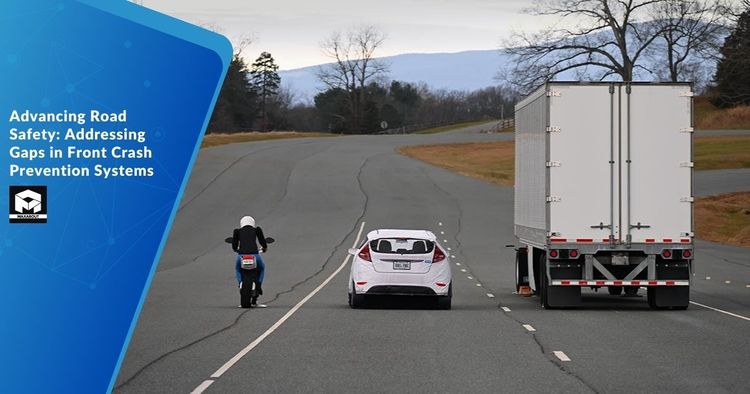Introduction
Front crash prevention systems are instrumental in curbing collisions on our roads. However, recent studies conducted by the Insurance Institute for Highway Safety (IIHS) illuminate a notable discrepancy in their efficacy, particularly when it comes to preventing crashes involving large trucks and motorcycles, as compared to their performance in car-related incidents.
Front Crash Prevention Systems
A pivotal component of modern vehicle safety, front crash prevention systems typically encompass two essential features: forward collision warning and automatic emergency braking (AEB). These systems provide timely alerts to drivers and can autonomously engage the brakes in emergency scenarios.
Reduced Crash Rates
While these systems have demonstrated commendable success in diminishing rear-end crashes, the extent of their effectiveness varies across distinct vehicle categories. The existing data points to a 38 percent reduction in rear-end crashes involving medium or heavy trucks and a 41 percent reduction with motorcycles. Nevertheless, these figures fall short of the impressive 53 percent reduction witnessed in crashes with other passenger vehicles.
Unique Risks Posed by Trucks and Motorcycles
Motorcycles and large trucks introduce unique risks into the equation owing to visibility challenges and the absence of protective structures. Motorcycles, due to their smaller and narrower profiles, pose difficulties in detection, while collisions with large trucks can result in severe consequences due to their substantial size.
Potential for Improvement
Highlighting a critical opportunity for improvement, aligning the effectiveness of front crash prevention systems with large trucks and motorcycles to match their success with cars could potentially avert an additional 5,500 crashes annually involving trucks and 500 crashes with motorcycles.
Fatalities
A noteworthy revelation is the significant role played by large trucks and motorcycles in fatal rear-end crashes. Despite passenger vehicles being involved in the majority of rear-end crashes overall, trucks and motorcycles account for about 43 percent of fatal incidents. This statistic underscores the potential for reducing fatalities by enhancing front crash prevention for these specific vehicle types.
Research Method
To evaluate the real-world effectiveness of current front crash prevention systems, IIHS conducted an extensive study. The analysis involved a comparison of crash rates between vehicles equipped with front crash prevention features and those without, utilizing police-reported crash data spanning 18 U.S. states from 2017-21.
System Limitations
The study findings underscore certain limitations in the ability of front crash prevention systems to detect large vehicles and motorcycles compared to their performance with standard passenger cars. Notably, motorcycles, due to their smaller size, present a particular challenge for these systems.
New Evaluation and Collaboration with Transport Canada
In response to the identified gaps, IIHS is undertaking a comprehensive vehicle-to-vehicle front crash prevention evaluation. This initiative aims to ensure that these systems exhibit consistent performance across various vehicle types, with a particular emphasis on large trucks and motorcycles. Collaborating with Transport Canada, the study assesses system responses to different vehicles and surrogate targets at higher speeds (31 mph, 37 mph, and 44 mph).
The research underscores the urgency for refinements in front crash prevention systems, specifically to address the unique challenges posed by large trucks and motorcycles. By bridging these gaps, we have the potential to elevate road safety, reduce the incidence of crashes, and ultimately preserve lives on our roadways.

